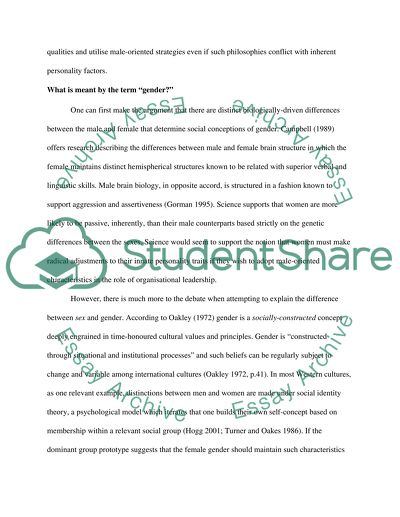Cite this document
(“Women must demonstrate male characteristics in order to succeed as Essay”, n.d.)
Retrieved from https://studentshare.org/gender-sexual-studies/1466465-women-must-demonstrate-male-characteristics-in-order-to-succeed-as-leaders-and-must-cast-aside-feminine-qualities
Retrieved from https://studentshare.org/gender-sexual-studies/1466465-women-must-demonstrate-male-characteristics-in-order-to-succeed-as-leaders-and-must-cast-aside-feminine-qualities
(Women Must Demonstrate Male Characteristics in Order to Succeed As Essay)
https://studentshare.org/gender-sexual-studies/1466465-women-must-demonstrate-male-characteristics-in-order-to-succeed-as-leaders-and-must-cast-aside-feminine-qualities.
https://studentshare.org/gender-sexual-studies/1466465-women-must-demonstrate-male-characteristics-in-order-to-succeed-as-leaders-and-must-cast-aside-feminine-qualities.
“Women Must Demonstrate Male Characteristics in Order to Succeed As Essay”, n.d. https://studentshare.org/gender-sexual-studies/1466465-women-must-demonstrate-male-characteristics-in-order-to-succeed-as-leaders-and-must-cast-aside-feminine-qualities.


